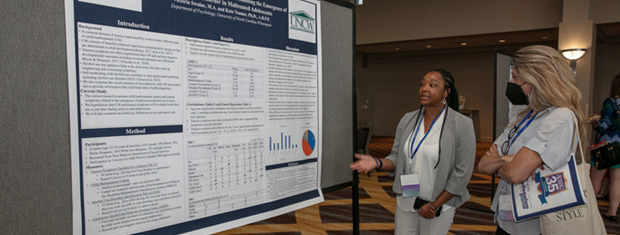




The APSAC Advisor is a peer reviewed quarterly news journal for professionals in the field of child abuse and neglect.
The APSAC Advisor provides succinct, data-based, practice-oriented articles that keep interdisciplinary professionals
informed of the latest developments in policy and practice the field of child maltreatment. It is designed to highlight
best practices in the field and publish original articles and current information about child maltreatment for professionals
from a variety of backgrounds including medicine, law, law enforcement, social work, child protective services, psychology,
public health and prevention in the U.S.
 If you wish to learn more about submitting an article to the Advisor, please click here.
If you wish to learn more about submitting an article to the Advisor, please click here.
This library contains Advisor issues dating back to the first issue in 1988. The most recent issue appears at the top.
Scroll down to select past issues by year and issue number. Once a publication appears in the box, you
can use the Enlarge button to open the document in a new window or tab (depending on how your browser is set up).
This will allow you to view the document with larger print.
To print a document, first use the Enlarge button to open the document in a new window or tab. Then use your browser's Print command.
To return here from a new tab, close the tab. To return from a new window, click your browser's Back button.
In the listing below, click on a year and issue number to see the articles in that publication.
2019 Number 1
At Issue: Child Abuse Reporters and the Immunity Myth
The authors survey research studies that show a growing number of professionals who work with children fear retaliation. These studies also indicate that many mandated reporters have experienced serious negative consequences for their good faith actions to prevent, investigate, and treat child maltreatment cases. This article suggests that immunity for child abuse reporting is a false belief, based largely on the protections from liability contained in each state’s law on mandatory reporting. However, these laws are not enforced by any state or federal government office. In recent years, legislation has been passed to increase the number of people legally obligated to report abuse, to increase training requirements for mandated reporters, and to increase the penalties for those who fail to report. Yet, these measures will do little to strengthen the mandatory reporting system as long as teachers, psychologists, social workers and medical staff continue to experience dire consequences for working on the frontlines of child protection.
An Overview of Published Medical Research About Child Abuse and Neglect During 2006 - 2015
We evaluated the published medical literature concerning child abuse during 2006 - 2015 to better understand the strength of its evidence by using the following categories: (1) frequency of publication, (2) specialties of the journals publishing this research, (3) use of specific observational and interventional study designs and level of evidence, and (4) relationships with specific child maltreatment types. We located 366 articles listed in PubMed and other sources under the major subject headings of child abuse or shaken baby syndrome (after removal of nonmedical articles and duplicates) and found that the number of publications were increasing at a rate of 5% or more per year. Publication characteristics were similar to other medical research but differed from child abuse research overall in that the primary type of maltreatment studied was physical abuse, followed by sexual abuse, neglect, and multiple types. Case series or case reports predominated, followed by case-control, cross-sectional, ecological, longitudinal cohort, and clinical trial reports. The mean level of evidence was 3.59, which varied by child maltreatment type, and the greatest improvements in study design were in articles about neglect. Medical research in child abuse and neglect mirrored other medical specialties in its level of evidence, but improvements in study design and research support are needed for continued growth.
True Evidence-Based Practices Deserve Wide Acceptance
Decades of clinical trials have provided compelling data that evidence-based practices (EBPs) are improving outcomes for children and their families. EBPs have been one of the most important developments in child welfare practice, but despite proven positive outcomes, they have continued to be met with resistance - resistance that must be overcome if the child welfare profession is to adopt true best practices. Government legislation such as The Family First Act encourages the implementation of EBPs, but the continued efficacy of EBPs and the effectiveness of that legislation will depend on how strictly evidence-based is defined.
A National Initiative to End Corporal Punishment
Corporal punishment (CP) or the physical discipline of children is not only harmful to child development but also places children at greater risk for injury. In response to APSAC’s policy statement calling for the elimination of all forms of CP and physical discipline of children, a National Summit to End Corporal Punishment in the United States was convened October 12-13, 2017. The primary goal of the Summit was to develop a national strategy to end CP in the U.S. The Summit brought together 37 national experts and researchers in the areas of CP and violence to children, public health, and marketing and media as well as representatives from national organizations, government agencies, and foundations. This article discusses the purpose, goals, and outcomes of the Summit as well as the various activities (e.g., No Hit Zones) and accomplishments of the National Initiative in the following 18 months. Strategies to change social norms about CP and opportunities to collaborate are discussed.
No Hit Zones: A Simple Solution to Address the Most Prevalent Risk Factor in Child Abuse
Reducing the most prevalent risk factor for child abuse in the United States - social norms around corporal punishment - is difficult but essential. Although the science is clear that corporal punishment is associated with numerous harms, professionals struggle communicating risk in the face of the overwhelming acceptance of spanking across cultures in the U.S. No Hit Zones (NHZs) offer a viable and simple solution to changing social norms, starting by banning hitting similar to the way no smoking areas were successfully established. This article details the need, purpose, evaluation, lessons, steps, and misconceptions of implementing NHZs. The journey to ending corporal punishment of children is admittedly difficult, and No Hit Zones offer one tested path.
Many parents hit their children as a means of discipline because they sincerely believe this practice is commanded by God. Child protection professionals must be mindful of this dynamic and employ a culturally sensitive approach when working with these parents. Using a hypothetical case, this article traces the roots of religious adherence to corporal punishment and finds that while this belief is predominate among theologically conservative Protestants, it is not universally accepted and has many nuances. Applying this knowledge, the reader is provided five theological arguments that are accepted by a number of conservative Protestants for moving away from the physical discipline of children.
APSAC Advisor 31(1): Full Issue